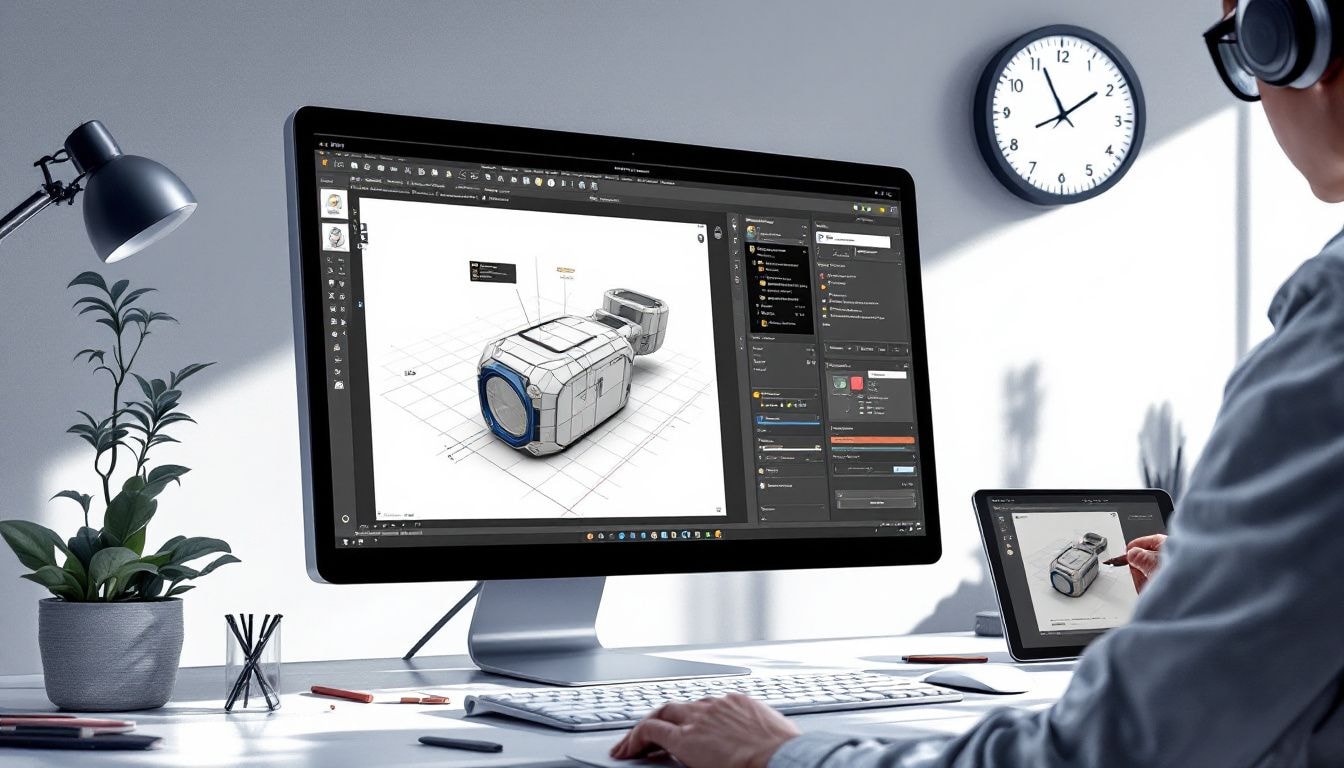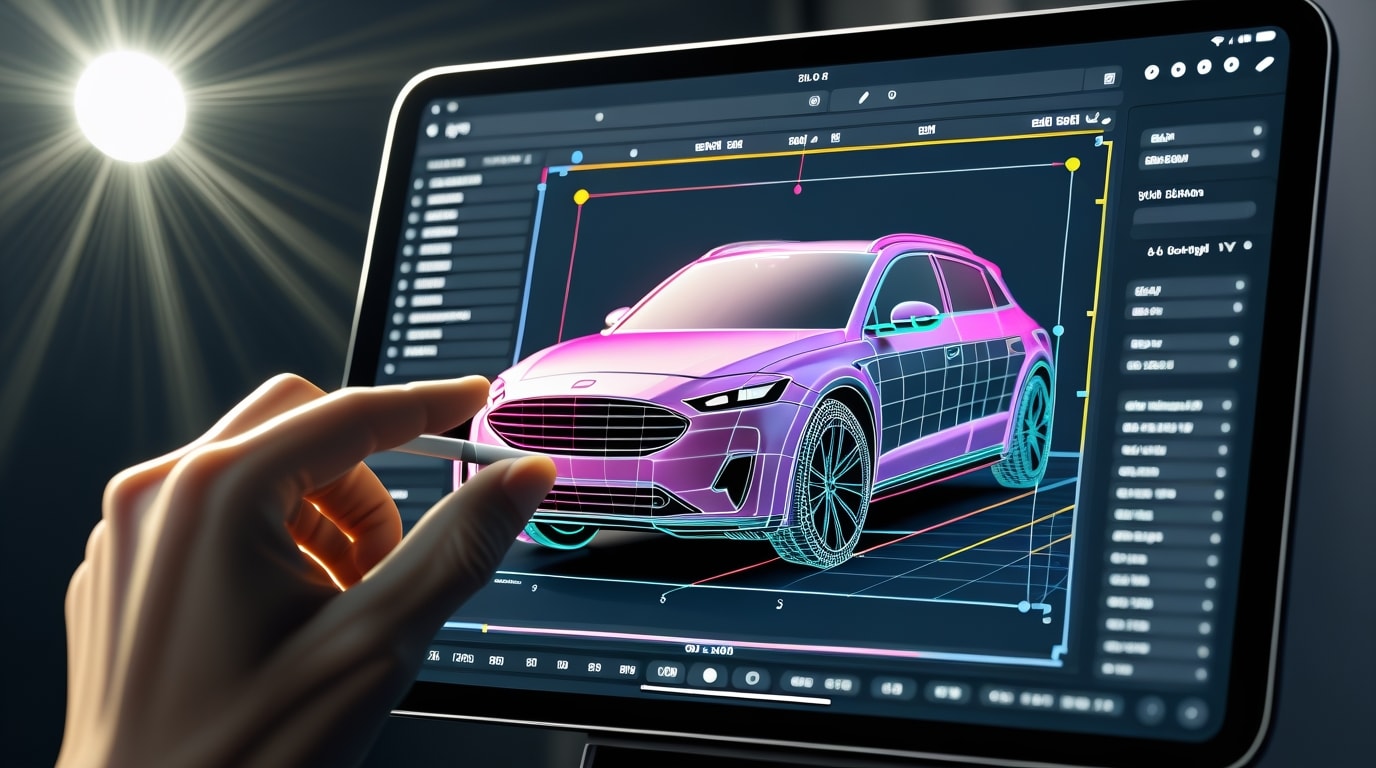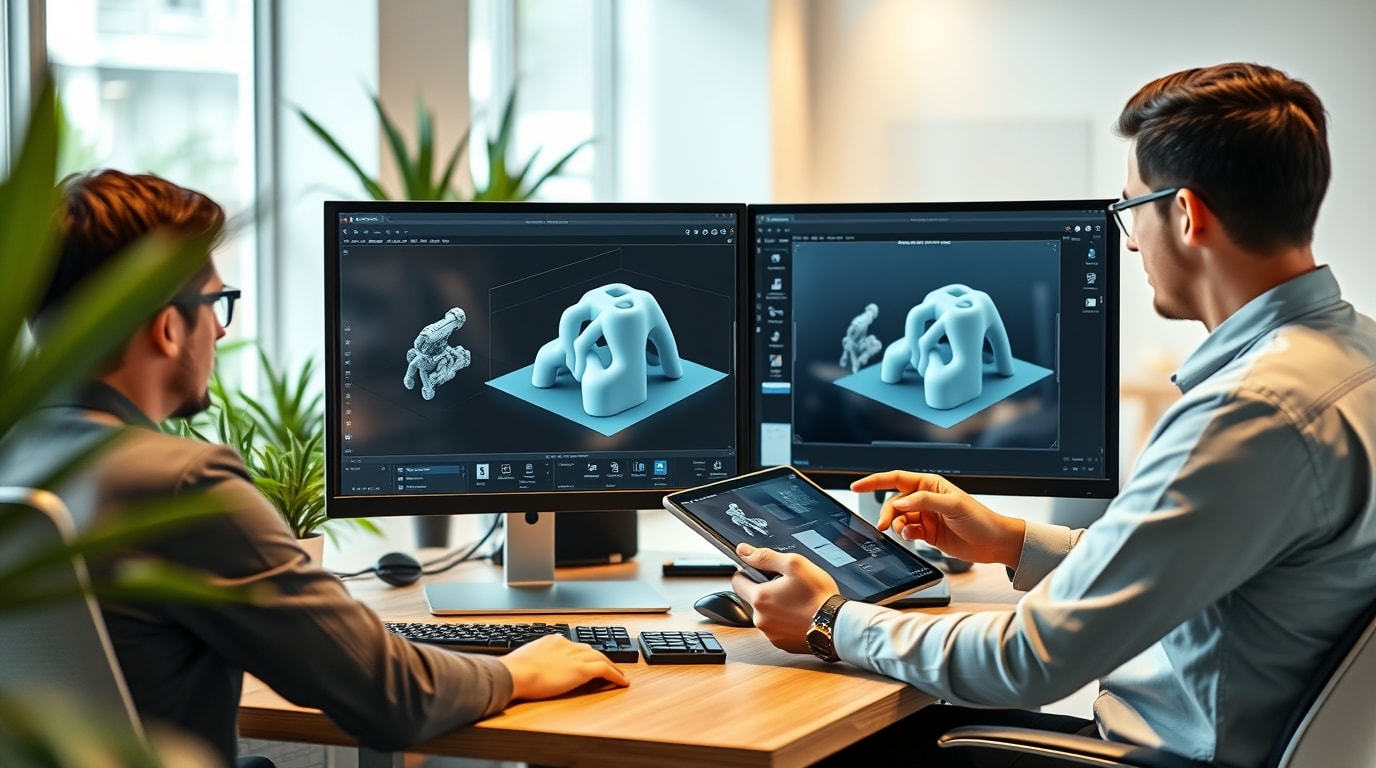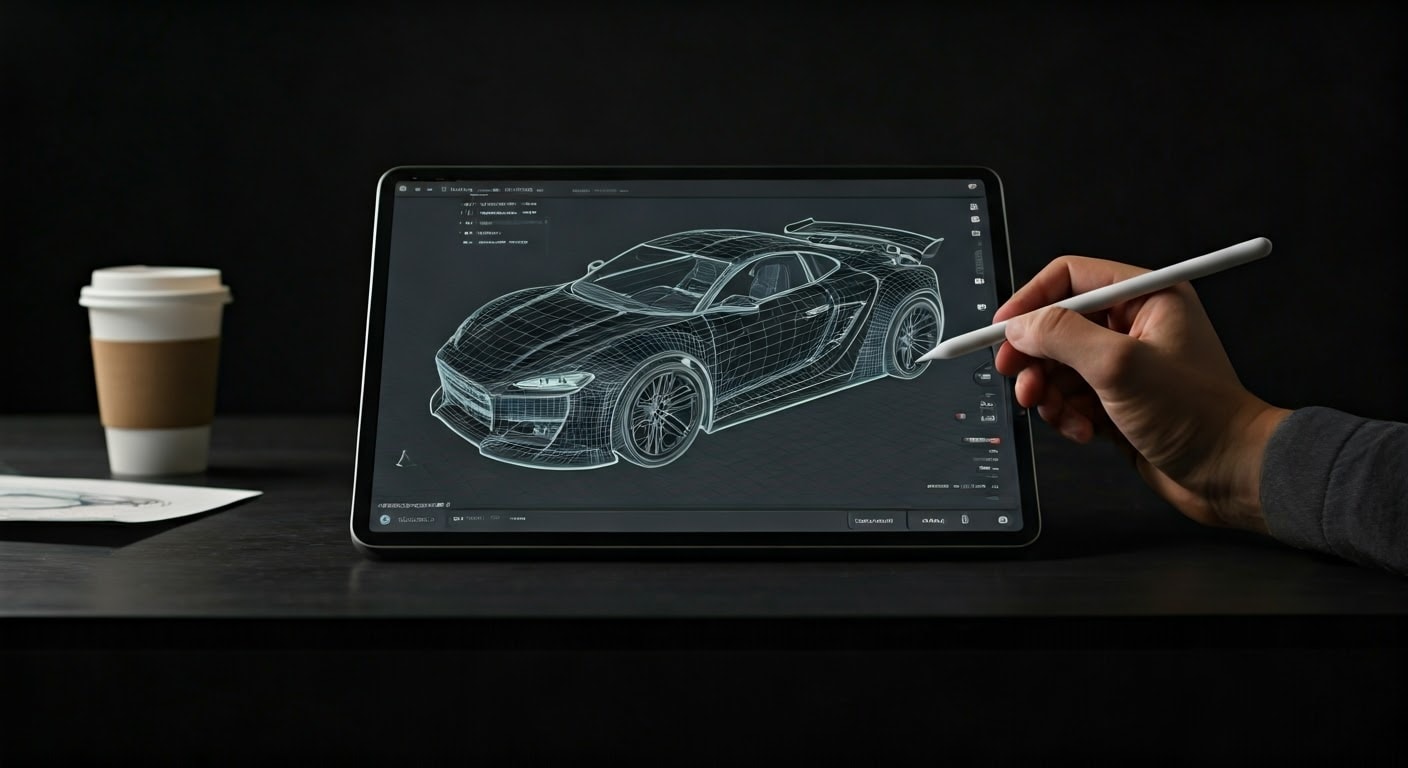The world of 3D design has come a long way, with applications that make 3D modeling more accessible than ever. Whether you’re an architect designing a new building, a product designer creating prototypes, or a hobbyist exploring creative ideas, the right app for 3D design can significantly enhance your workflow.
In this article, we’ll explore what 3D design apps are, their key features, and how they are shaping various industries. We’ll also cover essential tools and considerations to help you choose the right app for your needs.
Introduction to 3D design
3D design is the process of creating three-dimensional models using computer software. It involves the use of various tools and techniques to create and manipulate 3D objects, which can be used in a variety of fields such as architecture, product design, engineering, and video game development. With the advancement of technology, 3D design has become an essential skill for many professionals, and it’s also accessible to hobbyists and enthusiasts.
In this section, we’ll introduce you to the basics of 3D design, including the different types of 3D modeling software, the tools and techniques used in 3D design, and the various applications of 3D design.
What is a 3D design app?
A 3D design app is software that allows users to create, visualize, and manipulate three-dimensional objects in a virtual environment. These apps often include tools for creating basic geometry, which is essential for quickly sketching out initial designs and concepts. These apps are used across industries such as architecture, interior design, engineering, gaming, and marketing to bring digital ideas to life.
Unlike traditional CAD software, many modern 3D apps are designed to be intuitive, portable, and affordable, allowing users to work on various devices, including tablets and smartphones.

Types of 3D design apps
There are several types of 3D design apps, each catering to different needs:
- CAD Software: Used primarily by architects and engineers for creating detailed technical drawings and models.
- Modeling Apps: Focus on creating 3D shapes, objects, and characters for various industries, including gaming and animation.
- AR/VR Apps: These apps, like RealityMAX, bring 3D models into augmented reality, allowing users to visualize their designs in real-world settings.
Key features to look for in a 3D design app
Choosing the right 3D design app depends on the specific features you need. Here are some essential tools and capabilities to consider:
Object and edge tools
- Look for apps that allow you to easily multi-select vertices, edges, and faces to enhance your workflow efficiency.
Real-time feedback
- Some apps also allow you to adjust brush size and strength, which is crucial for detailed sculpting and modeling.
1. Object, edge, and sculpting tools
Object manipulation is a core function of any 3D modeling app. Look for apps that allow users to:
- Select, move, and rotate objects with ease.
- Create new edge loops to refine models.
- Collapse edges to simplify complex designs.
2. Grid snap and precision tools
Precision is crucial for technical designs. Grid snap features ensure accurate placement of objects, while tools for scale and precise values allow users to make detailed adjustments.
3. Real-time feedback and vertex color painting
Some apps provide real-time feedback, allowing users to see their changes instantly. This is particularly useful for collaborative projects where designers and clients can review models together.
4. Support for multiple file formats
Look for apps that support various file formats, such as OBJ files, for seamless integration with other tools and platforms.

Visualization and presentation
Visualization and presentation are crucial aspects of 3D design. Once you’ve created a 3D model, you need to be able to visualize it in a way that effectively communicates your ideas to others. This can be done using various visualization techniques, such as rendering, animation, and virtual reality.
In this section, we’ll discuss the different visualization and presentation tools available in 3D design software, including display tools, such as grid snap, vertex color painting, and edge length. We’ll also cover the importance of precise values, such as scale precise values, in creating accurate and detailed visualizations.

Popular use cases for 3D design apps
1. Architecture and construction
Architects use 3D apps to create detailed models of buildings and visualize them in real-world settings. This helps clients better understand the project before construction begins.
2. Product design
Product designers can use 3D modeling apps to create virtual prototypes. This saves time and resources by allowing designers to test their ideas before moving to physical production.
3. Marketing and advertising
3D apps are increasingly being used in marketing to create immersive experiences. For example, marketers can use augmented reality to showcase products in interactive campaigns.
Benefits of using a 3D design app
Using a 3D design app can significantly improve your workflow. Here are some key benefits:
- Accessibility: Many 3D apps are available on mobile devices, making it easier to work on the go.
- Cost-Effective: Compared to traditional CAD software, many 3D apps offer free versions or affordable pricing models. Many 3D apps offer a free version, which is ideal for beginners and home users looking to prototype concepts without a professional subscription.
- Ease of Use: Modern 3D apps have intuitive interfaces that require less time to learn.
- Cross-Platform Compatibility: Many apps work seamlessly across desktop, tablet, and smartphone devices.
Challenges of using 3D design apps
While 3D apps offer numerous benefits, they also come with some challenges:
- Learning curve: Although modern apps are more user-friendly, some advanced features may take time to master.
- Device limitations: Some apps require powerful hardware to handle complex models.
- Feature limitations: Free versions of some apps may lack essential tools, requiring users to upgrade to paid versions. Users may feel they are spending all the money they have on premium features without receiving sufficient benefits in return.
Working with 3D models
Working with 3D models involves using various tools and techniques to create, edit, and manipulate 3D objects. This can include using vertex tools, edge tools, face tools, and object tools to create and modify 3D models.
In this section, we’ll cover the different types of 3D modeling software, including CAD software, and the various tools and techniques used in 3D design. We’ll also discuss the importance of easily multi-selecting vertices, edges, and faces, and adjusting brush size and strength in sculpting tools.

Top tools to look for in a 3D app
When selecting a 3D design app, it’s essential to consider the tools it offers to enhance your workflow and improve productivity. Here are some key tools to look out for:
- Edge tools: These tools allow you to refine your 3D models by creating new edge loops, which help add detail and precision to your designs. Edge tools are crucial for sculpting and refining complex shapes.
- Vertex tools: Vertex tools enable users to modify individual vertices, allowing for more detailed modeling. They help in creating smoother transitions and adjusting the geometry of the model at a granular level.
- Grid snap: This feature ensures precise object placement by snapping objects to a grid. It’s particularly useful for maintaining alignment and accuracy in technical or architectural designs.
- Auto-save: Auto-save functionality automatically saves your progress at regular intervals, reducing the risk of losing your work due to unexpected crashes or interruptions.
- OBJ file support: Compatibility with OBJ files allows users to import and export models in a widely supported format, making it easier to integrate with other 3D modeling tools and platforms.
- Object tools: Look for apps that allow you to move, rotate, and scale objects freely, enhancing your creative process and workflow efficiency.
Future of 3D design apps
The future of 3D design apps looks promising, with advancements in AR, VR, and AI technologies. These developments will make 3D modeling more accessible and intuitive, allowing users to create complex designs with minimal effort.
Emerging trends to watch:
- Augmented Reality (AR): Apps that allow users to view their 3D models in real-world environments will continue to grow in popularity.
- AI-Powered Tools: AI can help automate repetitive tasks and enhance the design process.
- Cross-Device Compatibility: The ability to work across multiple devices will become standard in 3D apps.

Tips for effective 3D design
Effective 3D design requires a combination of technical skills, creativity, and attention to detail. Here are some tips to help you improve your 3D design skills:
- Use precise values, such as scale precise values, to create accurate and detailed models.
- Take advantage of display tools, such as grid snap and vertex color painting, to visualize your models effectively.
- Use edge tools, such as new edge loops and border edge, to create complex shapes and models.
- Experiment with different sculpting tools and techniques to create unique and detailed models.
- Use object tools, such as combine and separate, to create complex models and scenes.
- Don’t be afraid to try new things and experiment with different techniques and tools.
By following these tips and practicing regularly, you can improve your 3D design skills and create stunning and effective 3D models.
Conclusion
3D design apps are revolutionizing the way professionals and hobbyists create, visualize, and share their ideas. Whether you’re working on an architectural project, product prototype, or marketing campaign, the right app can make a significant difference in your workflow.
As you explore different 3D design tools, consider your specific needs and look for features that enhance precision, collaboration, and creativity. Apps like RealityMAX are leading the way in real-time AR/VR visualization, making 3D design more immersive than ever before.




